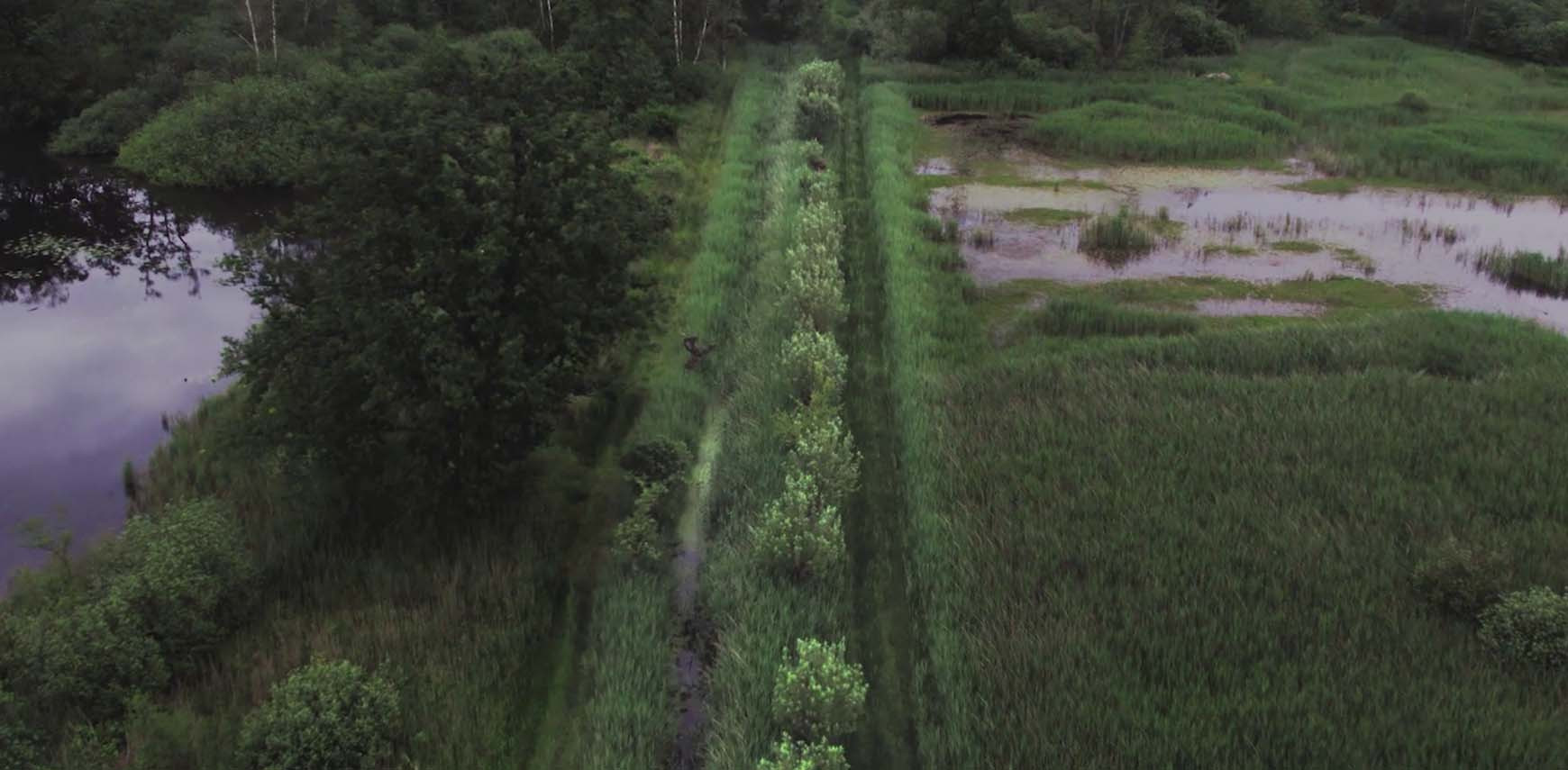De Zegge’s root-based filtration system
De Zegge, located in Geel and the oldest nature reserve in Flanders, is installing a ‘water treatment station’ that is based on plants. ‘In times of drought, water must be guided into the low-lying peatland to keep the soil moist enough to sustain its soil organisms and flora, as well as to maintain, the natural functions of the ecosystem, such as CO2 capture. Our helophyte filter, which makes use of the roots of various marsh plants, helps us to improve the quality of the water as well as the water management situation in De Zegge’, explains coordinator Toon Deswert. The system was installed in collaboration with the Antwerp Provincial and Intercommunal Drinking Water Authority (PIDPA), the Antwerp Zoo Foundation (AZF) and the Antwerp Zoo Centre for Research and Conservation (CRC). It is part of the ADMIRE project, which is funded through the European Union’s Interreg programme.
In low-lying peatlands, ensuring a year-round stable – i.e. sufficiently high – water level is of crucial importance. ‘Ideally, the water level is parallel to the height at which we mow the vegetation’, explains Toon Deswert. ‘However, increasing drought is causing the water level to drop too far. In theory, De Zegge should be inundated with ground water, but this is literally being pulled away from underneath due to the desiccation of the surrounding land. When that happens, the only solution – albeit temporary and less favourable – is to facilitate the flow of surface water from outside into our nature reserve.
"De Zegge must be sufficiently inundated to sustain its soil organisms and flora, as well as to maintain, the natural functions of the ecosystem, such as CO2 capture." - coordinator Toon Deswert
However, surface water from external sources does not meet the requirements of low-lying peatlands. CRC’s Willem-Jan Emsens explains: ‘The water flowing into the nature reserve from nearby areas contains nutrients such as sulphate, nitrate and phosphate.’ Deswert continues: ‘It may sound like a paradox, but this is exactly what we do not want. To low-lying peatlands, this ‘rich water’ is actually ‘dirty’ due to the nutrients it contains. It is not suitable for the ‘poor’ habitat of De Zegge, which we call an ‘oligotrophic’ habitat. If we were to introduce ‘rich water’ into this oligotrophic habitat, it would become ‘richer’. This would result in all sorts of changes in flora and fauna. To facilitate the natural functions of De Zegge’s ecosystem, which includes CO2 capture, we must strive to maintain the natural situation of a low-lying peatland to the greatest extent possible.’
Roots: a successful strategy
The word helophyte contains the Greek word helos, which means ‘marshland’ or ‘swamp’. ‘Therefore, ‘helophyte’ is a contraction of this and the Greek word for plants: marsh plants. The roots of these plants grow underwater, while the plants themselves – such as reeds and cattails – grow above the water level. All the work in a helophyte filtration system is, in fact, done by this vegetation’, explains Deswert. ‘The system comprises a long ditch around 100 to 200 metres in length, through which nutrient-rich water flows along the roots of these marsh plants. The plants subsequently absorb all the nutrients through their roots. At the end of the route, the water comes out of the filter a lot poorer – the nutrients have been extracted from it, after all.
"In a ditch 100 to 200 metres long, marsh plants such as reeds extract all the undesirable ingredients from the water." - Willem-Jan Emsens, Antwerp ZOO Centre for Research and Conservation
What makes this helophyte filter so special is that it also makes use of a harmless chemical component. ‘With help from the PIDPA water authority, we are supplementing our helophyte filter with cassettes containing IOCS granulates. These ‘Iron Oxide Coated Sand’ granules will chemically bind with the phosphates in the water,’ explains Emsens. ‘These phosphates can then be extracted together with the iron granules. As a result, even fewer nutrients will be retained in the water that ultimately flows into De Zegge.’
Temporary compromise
The helophyte filter is a temporary solution in De Zegge’s quest for a way to keep the nature reserve inundated to the greatest extent possible. ‘We are joining forces with a diversity of partners in an endeavour to improve the quality of the incoming water. This helophyte filter is part of the European ADMIRE project, which will span two years. The Antwerp Zoo Foundation (AZF) is in charge of managing the area and maintaining the plant-based filter. The staff regularly mow the vegetation to enable it to grow back again. Therefore, the filtration process is cyclical. The iron granules can, however, become saturated, depending on the phosphate content. They can be extracted and replaced when necessary. PIDPA is in charge of the execution and the design of the filter. The staff at the research centre of Antwerp ZOO and Planckendael ZOO, the Antwerp Zoo Centre for Research & Conservation (CRC), will be monitoring the effect of the filtration system.
Although this helophyte filter is certainly sustainable, it is only an intermediate step on the road to a permanent solution. Deswert concludes: ‘In the current situation, even a helophyte filter will not be enough to ensure the long-term restoration of the peatlands. If we want to achieve this, we will need to consider ecohydrological system recovery at landscape scale. Until then, the helophyte filter is no more than a technical tool that can be used in periods of drought.’

